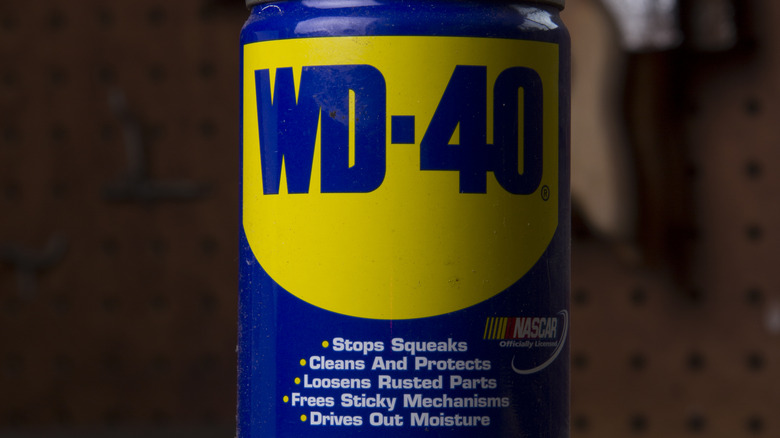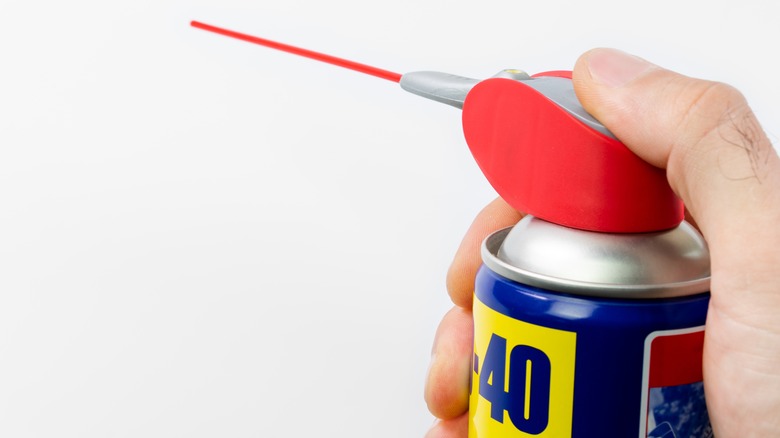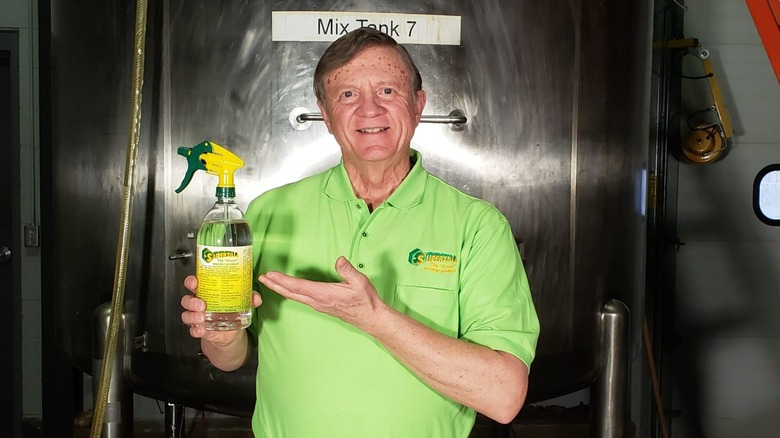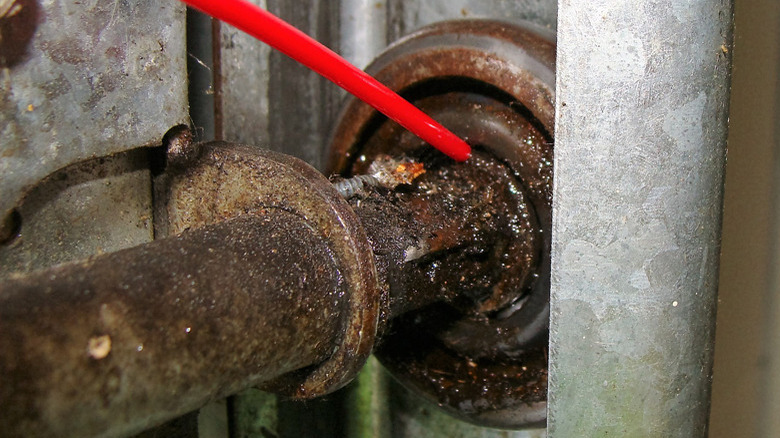WD-40 Vs Superzilla: Which Is The Best?
When you're on the hunt for an easy-to-find lubricant that can also double as something of a cleaning agent (and possibly provide a protective coating against future grime), WD-40 might come to mind first. Or Superzilla. Or both.
While either brand may seem interchangeable from the outset, there are notable differences between the two. Speaking to which is the better choice, that all comes down to what you need — or think you might need down the line. WD-40 may eclipse Superzilla in one particular area, while Superzilla completely outpaces WD-40 in another. So it's best to figure out exactly what you want before trying to choose.
Keep in mind that this is all pertaining to basic lubricant products from both companies, not more specialized items like WD-40's Electrical Contact Cleaner or compressed air canisters. Because you don't want to use compressed air when the situation calls for reduced friction, and you definitely don't want it the other way around.
What's so special about WD-40?
WD-40 is a versatile, petroleum-based liquid with somewhat goopy and viscous properties. It's also the more well-known name between the two brands, with the earliest formulas appearing at mass retail back in 1958.
Prevalence aside, it's most commonly used for a variety of odd jobs, repair work, and metal protection. Many rely on WD-40 for un-sticking all sorts of metal components — from hinges and sliding doors to zippers — as well as keeping them moving freely for as long as the formula holds up. However, just how long that ends up being will vary depending on the material and consistency of use.
It's also commonly used to assist with removing stuck bolts and screws, as well as clean off greasy or rusted surfaces. That said, WD-40 isn't as all-purpose as its reputation may imply. There are absolutely some mechanisms that you should avoid using it with, and its own chemistry can lead to problems when applied to certain materials, which is where Superzilla comes in.
Why is Superzilla different?
One of the most significant physical differences between WD-40 and Superzilla is that Superzilla is not a petroleum-based liquid — it's silicone-based. This means it's more liquidy and less viscous than its counterpart, which allows it to reach areas that might otherwise be too small or narrow for WD-40 to reach.
Beyond the base used in its creation, Superzilla boasts a lack of toxicity as well. Yes, it's a non-toxic cleaner and lubricant that, while you'll still want to avoid ingesting, is far safer to keep around children and pets, some of which is likely owing to the roughly 80 percent of its makeup coming from plants and other natural materials.
Superzilla also generally sticks around for an average of four months, so while you will need to reuse it on some surfaces and mechanisms (depending on the situation), you won't have to do it very often. That said, its silicone base does have the potential to cling to dirt and dust, requiring more regular cleaning even if you won't have to reapply regularly.
How do they stack up?
On a very basic level, you can think of the two like this: WD-40 has more potential applications (though it may not excel at all of them), while Superzilla is less adaptable but safer and more effective in many cases. The two most important things you need to ask yourself when deciding between WD-40 and Superzilla are what you need them for and which surfaces you plan to use them on. While they're neck-and-neck in some areas, their individual chemistry can make a significant difference.
Certain types of rubber are susceptible to damage after coming into contact with petroleum-based chemicals, which makes WD-40 something of a liability in certain situations. In contrast, Superzilla is billed as an all-surface cleaner that can be used on almost anything without risking degradation. But if you're planning on cleaning dirt, debris, and other potentially problematic build-up from car parts, WD-40 comes out on top. It's also better if you're looking for longer-term protection against rust.
WD-40 is generally the more affordable option between the two, with a 10-ounce can usually priced at around $8, while a can of Superzilla at the same size costs closer to $14. And that discrepancy only gets bigger when you start to look at larger quantities.



